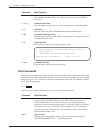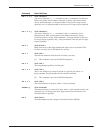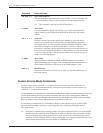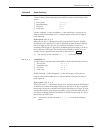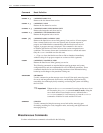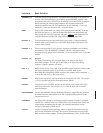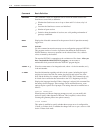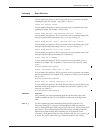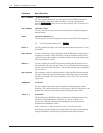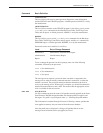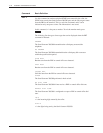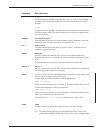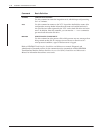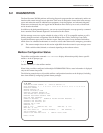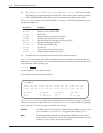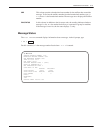
6-12
Installation and Maintenance
Volume
Octel Overture 200/300 Serenade 3.0
PB60014–01
Command Basic Definition
MOD DISABLE
Use
this command to block access to the Octel Overture 200/300 through the
internal modem. When the modem is disabled, if a logon is attempted by
pressing , a caller receives the error message “
That command is not
allowed.”
MODEM DISABLE
# # # 5
MOD ENABLE MODEM ENABLE
Use
this command to restore access to the Octel Overture 200/300 through the
internal modem.
MON2 MONITOR TERMINAL #2
Use this option to monitor incoming call records over the RS-232C link (port 2).
. T
o exit the monitor mode, press .
Escape
MON2 H Use
this command to display call record data in hexadecimal format as it is sent
by the PBX.
MWL RECALC
Use
this command in certain integrations where the PBX lights lamps through a
computer (for example, A
T&T System 85), when the computer has been out of
service. Examines each mailbox to determine whether its message-waiting lamp
should be turned ON or OFF
.
MWOFF x Use
this command to turn OFF lamp message waiting that the message-server
link turned ON. This does not turn of
f the
HASMSG
flag that marks the message
as newly received. In this command,
x
is the mailbox number (up to eight digits).
For All, enter A.
MWL RELITE
This
command is used in certain integrations, when the PBX has been restarted.
Use this command to turns ON all message-waiting lamps that were ON before
the PBX was restarted. The server checks the
HASMSG
flag. If it is still set, the
lamp is relit.
NAMESTAT NAMESTAT
Use this command to print the status of the Dial-by-Name directory (Names
Directory). This command provides overall figures for Dial-by-Name; that is, the
number of local names stored and the number of network names stored.
PASS x y PASSWORD
The Octel Overture 200/300 has three password levels. Each password can be a
maximum of eight alphanumeric characters, 0–9 and A–Z. Refer to the
Configuration
volume, Understanding Configuration, Security Protection
Procedures and Guidelines section.
In this command,
x
is the password level, and
y
is the new password.
Default passwords are created by the manufacturer
. These passwords should be
changed immediately. The following describes the three password levels:



